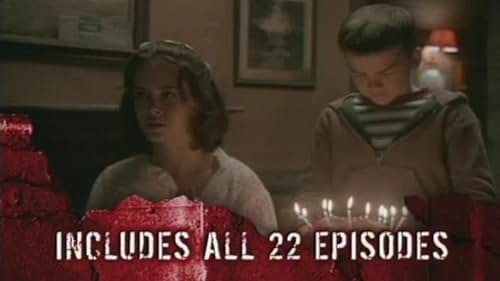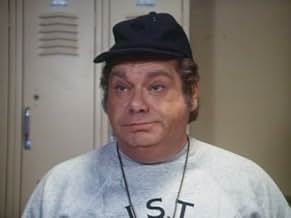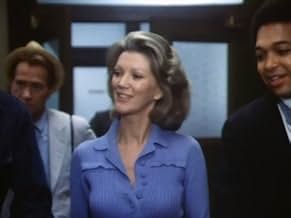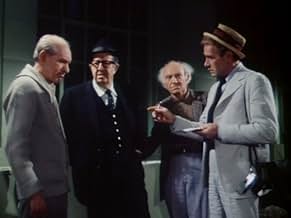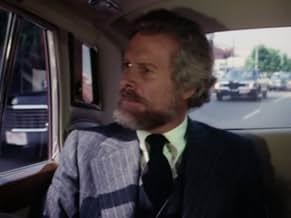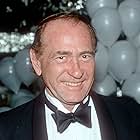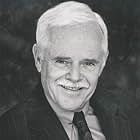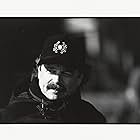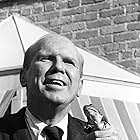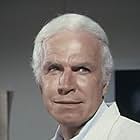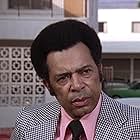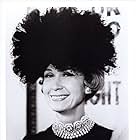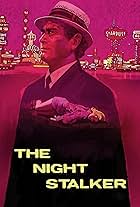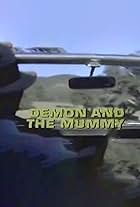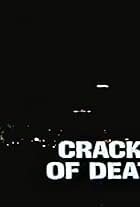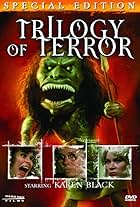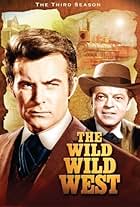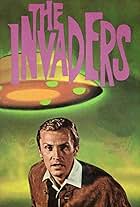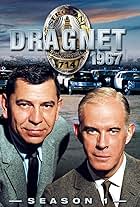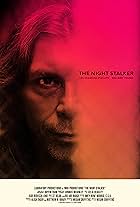Carl Kolchak is a reporter for a Chicago newspaper. Through more accident than design he ends up investigating homicides, many of which involve supernatural forces. Ultimately, rather than r... Read allCarl Kolchak is a reporter for a Chicago newspaper. Through more accident than design he ends up investigating homicides, many of which involve supernatural forces. Ultimately, rather than reporting on the crimes, he solves them.Carl Kolchak is a reporter for a Chicago newspaper. Through more accident than design he ends up investigating homicides, many of which involve supernatural forces. Ultimately, rather than reporting on the crimes, he solves them.
- Awards
- 1 win & 2 nominations
Browse episodes
Storyline
Did you know
- TriviaThe series was cancelled because Darren McGavin asked to be released from his contract. Not only did he become disappointed with the series' scripts, but he ended up exhausted from the rigorous daily shooting schedule (beginning at 3:00 pm until just before sunrise) and his uncredited producing duties. Three scripts were left unproduced. Two of them were adapted into a "Kolchak" series of comic books in 2003.
- GoofsMany of the stories take place in the winter months, but there is never any snow, and even if there was no snow, it is highly unlikely one would be driving a convertible with the top down during the winter months in Chicago.
- Quotes
Carl Kolchak: If you want a job done right, you just have to foul it up yourself.
- Crazy creditsDuring opening credits, Kolchak throws his hat at a wall hook, it misses and falls into the garbage. When the show first aired, there was an alternate opening where he threw his hat, it stays on the hook, and Kolchak has a surprised look on his face. This was Darren McGavin's genuine reaction, as he had not expected it to happen. After the first few episodes, the opening was changed to the one that is currently shown on reruns and media releases.
- ConnectionsEdited into Tales of the Gold Monkey: God Save the Queen (1983)
Featured review
Almost 30 years after its debut, "The Night Stalker" is warmly remembered by folks who likely saw the show as youngsters, during its original run on CBS, and who are willing to overlook its faults to simply swim in the experience.
Also key to that loyalty is the undeniable charm of Darren McGavin one of this generation's most interesting character actors and Simon Oakland, as Kolchak's long-suffering managing editor, Tony Vincenzo.
The majority of the series' 20 episodes owe more to comedy and camp than the matter-of-fact style of its two highly regarded made-for-TV movie predecessors. In my opinion, there are six episodes that truly stand out weaving suspense, horror, a bit of gore and a healthy dose of comedy to create taut stories that are a helluva lot of fun.
No. 6 is "The Ripper" (original air date: 9-13-74). Penned by veteran television writer Rudolph Borchert, the series' debut is built around the premise the *real* Jack the Ripper super-human in ways that go completely unexplained is wreaking havoc in modern-day Chicago. There are some delicious moments and terrific performances by McGavin, Oakland, Ken Lynch, (as gruff police chief L.M. Warren) and Beatrice Colen (as reporter Jane Plumm). The conclusion is one of the few in the series that takes the necessary time to play out and creates remarkable tension as it draws to a spectacular finish.
No. 5 is "The Vampire" (10-4-74). Although it's never actually stated, the antagonist from this installment seems to have been a victim of Janos Skorzeny, the vampire from the 1972 "Night Stalker" TV movie. "The Vampire" is also one of only two Kolchaks that take place away from Carl's home base of Chicago, and the trip he finagles to Los Angeles, to surreptitiously follow a tip from an old Vegas friend, Jim "Swede" Brytowski (Larry Storch), is fraught with lively encounters, including with prickly L.A. police lieutenant, Jack Matteo (played by William Daniels). As with "The Ripper," the closing sequence is spectacular and visually satisfying. It's interesting to note that "Sopranos" executive producer David Chase wrote this and seven other "Stalker" episodes.
No. 4 is "Chopper" (1-31-75). In some of their earliest work in Hollywood, Robert Zemeckis (Oscar-winning director of "Forrest Gump") and Bob Gale (who penned the "Back to the Future" trilogy) combined to write "Chopper," and it flourishes despite some painfully weak visual effects. The story is just plain fun: "The Legend of Sleepy Hollow" meets "The Wild One." After the grave of 1950s biker "Swordman" Baker is unwittingly disturbed, he returns riding a vintage motorcycle to seek vengeance on those who separated him from his noggin 19 years before. Following a creepy build-up, the pay-off is a bit of a letdown - but, overall, "Chopper" is spooky and entertaining. Jim Backus chips in with a marvelous stand-alone scene as WW II Navy pilot-turned motorcycle salesman, still dealing with the emotional complexities of hawking Japanese bikes. (Watch closely during the final scene, in which Kolchak weaves through stacks of tarpaulin-covered caskets stored in a warehouse, searching for the canister containing Baker's severed head. As Carl raises his flashlight to read the list of names on a tarp to identify the remains in each group of coffins "BACKUS" is clearly visible. An apparent wicked nod toward the great comedic actor.)
No. 3 is "Horror In The Heights" (12-20-74), a compelling story by veteran horror writer Jimmy Sangster of a flesh-eating Hindu demon the Rakshasa able to search the minds of its victims to disguise itself as the person he or she trusts most. It's one of the few shows that give McGavin a chance to get on the IL' soapbox, since the murders occur in neighborhood inhabited by poor and elderly. In a refreshingly understated performance, Phil Silvers plays Harry Starman, who Kolchak usually a creature of necessity when it comes to cultivating relationships befriends. Although the cops are stumped about a series of grisly murders (natch!), Kolchak eventually determines the swastikas seen everywhere in the neighborhood and an ancient Pakistani restaurateur play crucial roles. McGavin is marvelous in the final scene, in which he's confronted by who *he* trusts most.
No. 2 is "The Spanish Moss Murders." What sets this one apart is the originality of the story, created by Chase and Alvin Friedman: the dreams of a young, vagabond Southerner, taking part in a sleep research program, unintentionally summon a horrifying monster from his childhood. Add to it a series of priceless moments including Keenan Wynn's hilarious performance as captain "Mad Dog" Siska; Carl's growing paranoia and some very eerie scenes in the sewers of Chicago and this one is almost guaranteed to be a universal fan favorite. One of my favorite moments has almost nothing to do with the story: when Bruno, a janitor at the newspaper offices, asks Carl if he's "gettin' any." How'd that make it by the censors?
My best of the best is "The Zombie" (9-20-74). It could be I'm partial to it beyond the story itself, which involves a simmering race war between rival underworld organizations, incited by someone who or something that won't stay buried. I remember watching it the night it aired, scared out of my wits by the menacing zombie, Francois Edmonds (played by former San Diego Charger all-Pro, Earl Faison). I've only recently come to appreciate the performance of Charles Aidman, as the only "crooked" cop (the rest being either anal retentive or incompetent) Kolchak encountered, Leo Winwood. Written by Chase and Zekial Marko, "The Zombie" features a slew of familiar character actors: Antonio Fargas, Joseph Sirola, Scatman Crothers, Val Bisoglio, J. Pat O'Malley and John Fiedler, in the first of three memorable appearances as Gordy "The Ghoul" Spangler. The final scene is tremendous: Carl, in a "place of the dead," perched uncomfortably next to the zombie he believes is dormant, readying a needle to sew its mouth shut. The tension is absolutely exhilarating.
Also key to that loyalty is the undeniable charm of Darren McGavin one of this generation's most interesting character actors and Simon Oakland, as Kolchak's long-suffering managing editor, Tony Vincenzo.
The majority of the series' 20 episodes owe more to comedy and camp than the matter-of-fact style of its two highly regarded made-for-TV movie predecessors. In my opinion, there are six episodes that truly stand out weaving suspense, horror, a bit of gore and a healthy dose of comedy to create taut stories that are a helluva lot of fun.
No. 6 is "The Ripper" (original air date: 9-13-74). Penned by veteran television writer Rudolph Borchert, the series' debut is built around the premise the *real* Jack the Ripper super-human in ways that go completely unexplained is wreaking havoc in modern-day Chicago. There are some delicious moments and terrific performances by McGavin, Oakland, Ken Lynch, (as gruff police chief L.M. Warren) and Beatrice Colen (as reporter Jane Plumm). The conclusion is one of the few in the series that takes the necessary time to play out and creates remarkable tension as it draws to a spectacular finish.
No. 5 is "The Vampire" (10-4-74). Although it's never actually stated, the antagonist from this installment seems to have been a victim of Janos Skorzeny, the vampire from the 1972 "Night Stalker" TV movie. "The Vampire" is also one of only two Kolchaks that take place away from Carl's home base of Chicago, and the trip he finagles to Los Angeles, to surreptitiously follow a tip from an old Vegas friend, Jim "Swede" Brytowski (Larry Storch), is fraught with lively encounters, including with prickly L.A. police lieutenant, Jack Matteo (played by William Daniels). As with "The Ripper," the closing sequence is spectacular and visually satisfying. It's interesting to note that "Sopranos" executive producer David Chase wrote this and seven other "Stalker" episodes.
No. 4 is "Chopper" (1-31-75). In some of their earliest work in Hollywood, Robert Zemeckis (Oscar-winning director of "Forrest Gump") and Bob Gale (who penned the "Back to the Future" trilogy) combined to write "Chopper," and it flourishes despite some painfully weak visual effects. The story is just plain fun: "The Legend of Sleepy Hollow" meets "The Wild One." After the grave of 1950s biker "Swordman" Baker is unwittingly disturbed, he returns riding a vintage motorcycle to seek vengeance on those who separated him from his noggin 19 years before. Following a creepy build-up, the pay-off is a bit of a letdown - but, overall, "Chopper" is spooky and entertaining. Jim Backus chips in with a marvelous stand-alone scene as WW II Navy pilot-turned motorcycle salesman, still dealing with the emotional complexities of hawking Japanese bikes. (Watch closely during the final scene, in which Kolchak weaves through stacks of tarpaulin-covered caskets stored in a warehouse, searching for the canister containing Baker's severed head. As Carl raises his flashlight to read the list of names on a tarp to identify the remains in each group of coffins "BACKUS" is clearly visible. An apparent wicked nod toward the great comedic actor.)
No. 3 is "Horror In The Heights" (12-20-74), a compelling story by veteran horror writer Jimmy Sangster of a flesh-eating Hindu demon the Rakshasa able to search the minds of its victims to disguise itself as the person he or she trusts most. It's one of the few shows that give McGavin a chance to get on the IL' soapbox, since the murders occur in neighborhood inhabited by poor and elderly. In a refreshingly understated performance, Phil Silvers plays Harry Starman, who Kolchak usually a creature of necessity when it comes to cultivating relationships befriends. Although the cops are stumped about a series of grisly murders (natch!), Kolchak eventually determines the swastikas seen everywhere in the neighborhood and an ancient Pakistani restaurateur play crucial roles. McGavin is marvelous in the final scene, in which he's confronted by who *he* trusts most.
No. 2 is "The Spanish Moss Murders." What sets this one apart is the originality of the story, created by Chase and Alvin Friedman: the dreams of a young, vagabond Southerner, taking part in a sleep research program, unintentionally summon a horrifying monster from his childhood. Add to it a series of priceless moments including Keenan Wynn's hilarious performance as captain "Mad Dog" Siska; Carl's growing paranoia and some very eerie scenes in the sewers of Chicago and this one is almost guaranteed to be a universal fan favorite. One of my favorite moments has almost nothing to do with the story: when Bruno, a janitor at the newspaper offices, asks Carl if he's "gettin' any." How'd that make it by the censors?
My best of the best is "The Zombie" (9-20-74). It could be I'm partial to it beyond the story itself, which involves a simmering race war between rival underworld organizations, incited by someone who or something that won't stay buried. I remember watching it the night it aired, scared out of my wits by the menacing zombie, Francois Edmonds (played by former San Diego Charger all-Pro, Earl Faison). I've only recently come to appreciate the performance of Charles Aidman, as the only "crooked" cop (the rest being either anal retentive or incompetent) Kolchak encountered, Leo Winwood. Written by Chase and Zekial Marko, "The Zombie" features a slew of familiar character actors: Antonio Fargas, Joseph Sirola, Scatman Crothers, Val Bisoglio, J. Pat O'Malley and John Fiedler, in the first of three memorable appearances as Gordy "The Ghoul" Spangler. The final scene is tremendous: Carl, in a "place of the dead," perched uncomfortably next to the zombie he believes is dormant, readying a needle to sew its mouth shut. The tension is absolutely exhilarating.
- TheOutsiders
- Jun 1, 2004
- Permalink
- How many seasons does Kolchak: The Night Stalker have?Powered by Alexa
Details
- Release date
- Country of origin
- Official sites
- Language
- Also known as
- Kolchak
- Filming locations
- Production companies
- See more company credits at IMDbPro
- Runtime51 minutes
- Sound mix
- Aspect ratio
- 4:3
Contribute to this page
Suggest an edit or add missing content

Top Gap
By what name was Kolchak: The Night Stalker (1974) officially released in India in English?
Answer
